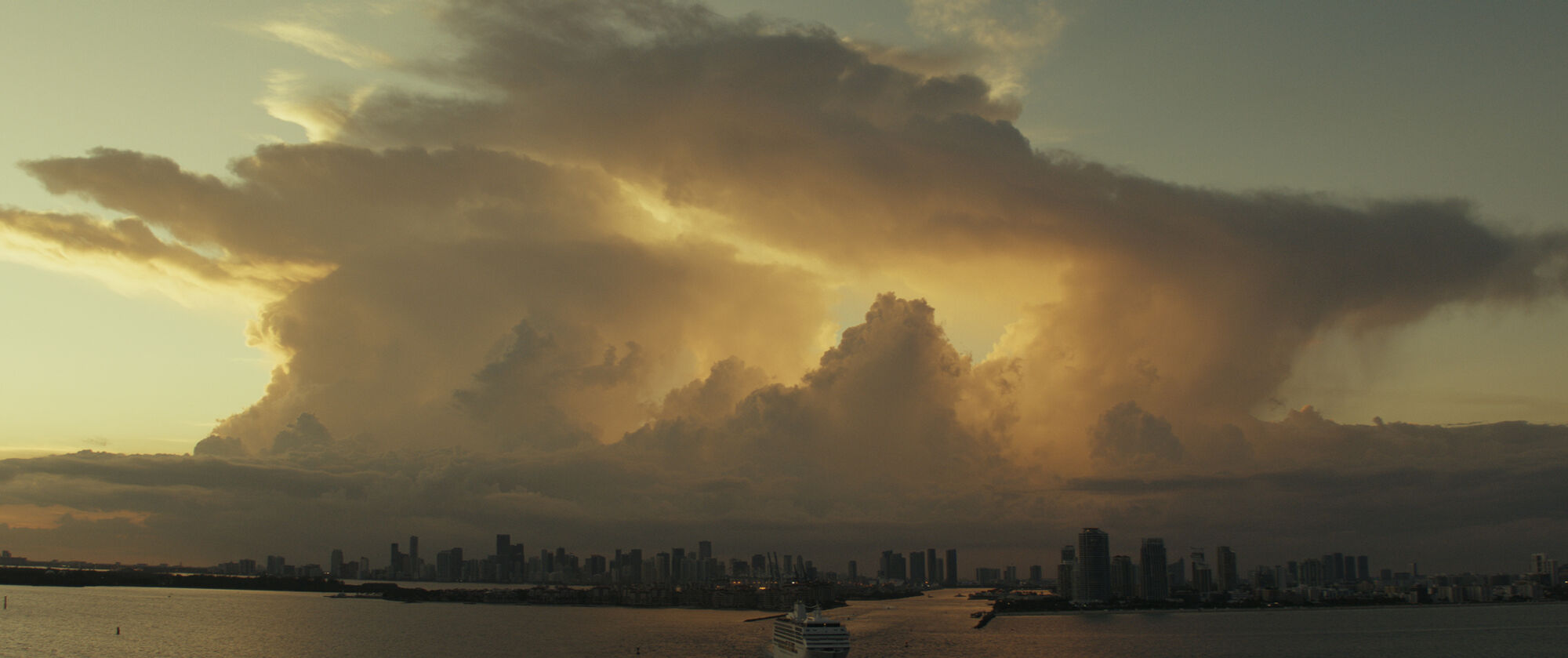Luma Pictures teamed up with Amazon Studios and Skydance Media to deliver 248 visual effects shots across six action-packed sequences in their time travel summer blockbuster, The Tomorrow War.
Directed by Chris McKay and starring Chris Pratt, the film follows science teacher and army veteran Dan Forester (Pratt) as he is drafted to fight a war that takes place in the future, and the fate of humanity rests on his shoulders.
Luma’s global team was called upon to bring the hero white spike creature to life as well as to build extensive distressed environments, digi doubles, and time travel effects. VFX Supervisor Brendan Seals led the Melbourne team of artists to help enhance their thrilling action sequences. In this interview with Seals, he talks through the creative process and the specific challenges the team tackled.

What was collaboration with the client like to create the white spike creature as well as the other VFX vendors?
We were fortunate to have started collaborating with VFX Supervisor Jamie Price and Producer Randy Starr very early on, which afforded us time to explore in-depth ideas of time travel, post-apocalyptic environments and creature battles. Jamie and Director Chris McKay were always sure to provide great references grounded in reality, even for briefs that were very much other-worldly! From there we were encouraged to evolve concepts and propose alternate ideas which meant it was an engaging experience for our team.
The white spike asset was spearheaded by Weta and shared with us and other vendors. Luma was responsible for several key sequences involving the male white spike, which we look developed in a variety of controlled lighting scenarios to have parity with Weta, but also to proof out in our unique sequence lighting conditions.
What was your approach to bringing this creature to life?
As is always our process with plate-based integration, we started with matching CG grey and chrome balls to practical references provided for each shot. Additionally, an early design prop head of the creature was captured on set, which was great for understanding how the colours of the environment had such an impact on the look of the white creatures.
A critical part of the integration of the creatures was in their involvement in the battle and interaction with the environment. When fired upon, their upper exoskeleton would deflect bullets in an array of chipped bone fragments and puffs of fine dust whilst their underside would bleed yellow or their legs could completely sever! The creature’s tentacles would shoot spikes causing dust and debris on impact and leaving spikes lodged in their surroundings in each subsequent shot. Other environmental interactions included smoke and ember simulations advected by the creatures and water ripples and splashes as they chased through the underpass.


What specific challenges did you come across for this creature?
Given the number of limbs per creature and the number of creatures per shot, we knew both the number of bullet hits on them and interactions they had with their surroundings would make it too time-intensive for completely manual FX work. We opted for automation, based on tech we developed on recent shows. Placement and timing of bullet hits were explored in animation with the data flowing into Houdini and automatically triggering and simulating the right kind of hit (bone fragments vs blood). Similarly, other creature effects such as dust hits, splashes and interactions with embers were automated so that artists could focus their time on refining the aesthetic of the setups feeding into automation throughout the show.
Luma created multiple environments for this film. Can you discuss the approach and creative process to creating these?
For our post-apocalyptic cityscape, we started with survey and google earth data of Miami and first built a proxy city. Once we put cameras in, we identified key foreground and midground buildings to be upres’d into bespoke destroyed CG buildings. We lit and rendered background building geometry in the same manner as the foreground, including window reflections. These lighting and reflection passes were then used to bring to life matte painted projections.
It’s not every day you get the chance to destroy a city! The team were additionally challenged with buildings on fire, billowing smoke, embers and even sheeting rain. The density of simulated layers of the atmosphere was a careful balance and crucial to achieving the mood Chris McKay was after.

Featured Image Credit: Courtesy of Amazon Studios.
Find out more about:
